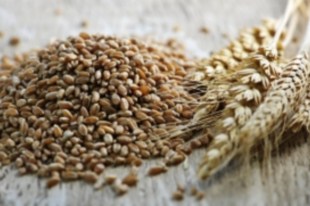What is the perfect diet? If you go by what you read in the media, you might toss up between the Mediterranean diet, the low-carb diet, or the Japanese diet. Now and again you will hear of the hunter-gatherer diet, or cave man diet, touted as the ideal choice as it was the diet consumed by humans for most of the last 100,000 years, changing only fairly recently.
The hunter-gatherer diet should probably be termed the gatherer-hunter diet as our forebears probably did more gathering than hunting. Either way, from here on I shall call it the Paleolithic diet. This is the diet we enjoyed before humans started to cultivate plants, domesticate animals and consume dairy foods about 5,000 – 10,000 years ago.
No bread, milk or baked beans for most of evolution
So, for two million years humans and their ancestors dined on wild animals, fruits, vegetables, nuts and seeds (but not legumes). There were no oils, dairy or grain-based foods in this time. Some say that this may be the ideal diet as our physiology evolved to make best use of these foods. Five or ten thousand years is a relatively short time to adapt to the agricultural changes we have experienced in our diet. Two hundred years is way too short for the body to adapt to the highly processed foods of the ‘modern’ diet. Certainly, no-one would suggest that the body was designed to eat Krispy Kreme donuts.
Paleolithic diet improves metabolism
A University of California study was designed to see the effect the Paleolithic Diet on human physiology when compared to the modern diet. Due to the time and commitment required only nine healthy people completed the 17 day trial in which the last 10 days was exclusively the Paleolithic diet. During that time their blood cholesterol dropped by 16%, triglycerides by 35% and a significant drop in blood pressure even though none had high blood pressure in the first place. Blood glucose and insulin levels also improved. There was no weight loss or change in exercise patterns in the group, so any metabolic effects observed were due to the change in diet.
As Professor Loren Cordain, a big fan of the Paleolithic Diet said: ”Our genome is very well adapted to wild plant and animal foods, and these giant come-latelys (grains, dairy, legumes) have potential effects of being discordant with our genome”. This small study suggests at least a short-term benefit to trying the diet.
“So what are the recommendations? Reduce processed foods, and increase fresh fruits, vegetables, nuts, lean meats and seafood,” Cordain concluded.
The argument for eating more minimally processed foods makes sense all round. Because our forebears did a lot of activity they would have eaten more kilojoules than us but the diet would have been more bulky, much higher in fruits and vegetables and been low in Glycaemic Index, meaning longer digestion and more normal blood glucose levels. We know that getting back to basics on the diet from will benefit the health of many westerners reliant on highly processed foods that require almost no chewing.
What does it all mean?
I think the debate on the ideal diet is all a bit theoretical. Even if the Paleolithic Diet is the best diet for humans, I don’t think I could live the rest of my life without camembert cheese, red wine and chocolate. I prefer the Comidas del Mundo Diet, which is one I just made up.
Basically, you choose good quality food and dishes that originated from around the world and enjoy them, such as tomatoes (origin South America), tea (China), yogurt (Persia), chocolate (Switzerland via South America), macadamias (Australia), and combine that with activities that exercise the brain and body. That’s the perfect diet and lifestyle for me anyway.
References:
European Journal of Clinical Nutrition 2009; 90: 269-275
American Journal of Clinical Nutrition 2010; 91: 295-297
Last Reviewed 10/Mar/2014
Editor
Latest posts by Editor (see all)
- Oily fish and diabetes prevention - 04/06/20
- Manage the andropause - 11/12/17
- Testing testosterone levels - 07/12/17






